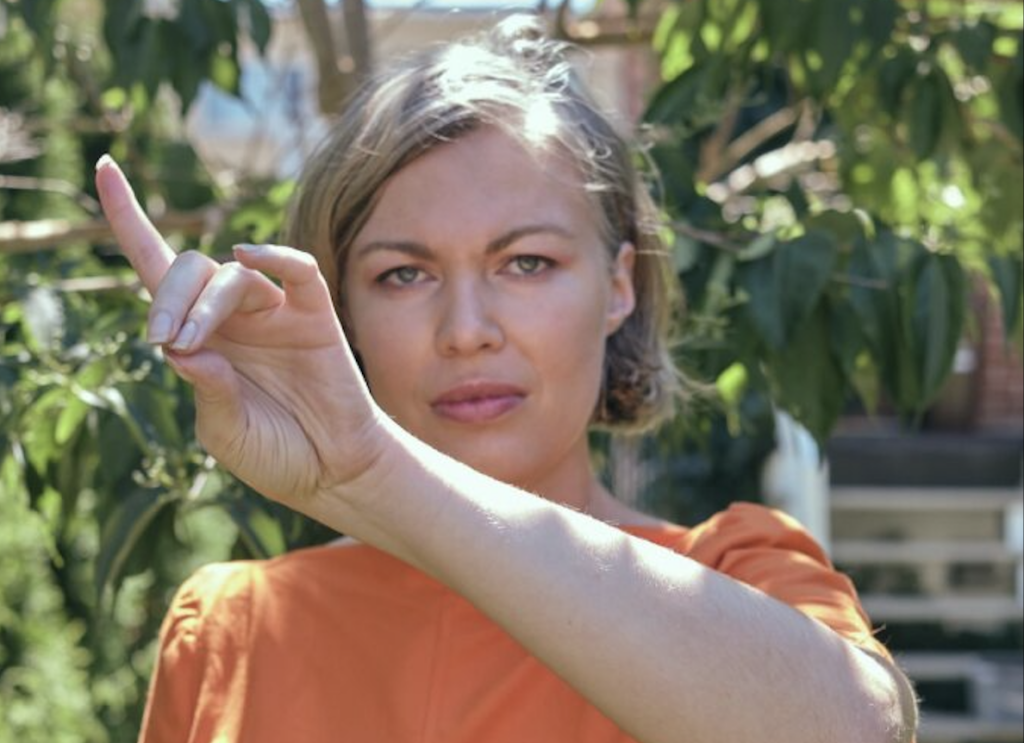Multidisciplinary artist-researcher Erin Gee is working with cinEXmedia to explore the artistic and performative components of these lesser-known disciplines, as well as their effects on audiences.
Sophie Leclair-Tremblay

The assistant professor at the Faculty of Music at the University of Montreal and newly appointed member of the cinEXmedia partnership Erin Gee integrates her expertise in emotional biofeedback and ASMR (Autonomous Sensory Meridian Response) into her electroacoustic musical practice to stimulate the senses and reactions of audiences. Her research focuses on the affective and physiological impacts of ASMR, a largely unexplored field she approaches as a serious scientific, technical, and social discipline.
Gee describes herself as a "DIY expert" in biofeedback music, an emerging discipline closely related to ASMR. It involves using a person’s real-time physiological signals—such as heart rate, breathing, or brain activity—as sound material or as a musical modulation source. She has developed a high level of expertise in the adaptation of instruments to the participants’ needs. “If part of the audience isn’t comfortable holding something during an experience,” she explains, “we can design a setup that avoids that limitation.”
Always exploring new ways to integrate ASMR into various art forms, Gee accepted an invitation from cinEXmedia director Santiago Hidalgo to join the partnership. She hopes to intersect her research on “the performative and sonic aspects of ASMR with the field of visual media,” she says. She envisions experiments aimed at multi-generational audiences to explore the perception of ASMR through sound and image, as well as the possible disconnect between emotions perceived by the mind and those expressed by the body.
The project, which just received funding from the Social Sciences and Humanities Research Council of Canada (SSHRC), will focus on both physiological and psychological responses from participants exposed to ASMR videos and techniques. “When I look into the history of biofeedback music,” says Gee, “I find that researchers tend to focus heavily on how the technology works. That has to be considered in our work too.”
She recently explored the impact of digital tools in a paper titled "The BioSynth — an affective biofeedback device grounded in feminist thought", published in 2023 on the website of the International Conference on New Interfaces for Musical Expression, where it won Best Paper Award. “I’m a very early-career professor, so most of my recent work has been artistic,” she says, “but this paper marked my first major contribution to peer-reviewed academic literature.”
Excerpts of her musical performances are available on her Instagram page.
An intimate experience
A specialist in digital lutherie and interactive systems, Erin Gee designs devices where sound engages in the entire human body. For example, low frequencies are not just heard — they are physically felt, like a pressure wave striking the skin. She sees this as a kind of “remote touch,” where the ear and the skin become inseparable in the sonic experience. “Sounds literally touch us,” she explains. “There are pressure waves moving through the air, and depending on their frequency, we can feel that contact as a physical presence.”
This is how she approaches ASMR: not as a casual or amateur practice, but as a rigorous experimental field at the crossroads of art and science. ASMR operates on the level of intimacy—whispers, rubbing, or crackling sounds can trigger tingles, relaxation, or shivers in the listener. These effects vary from person to person and sometimes reveal a disconnect between what the mind thinks it feels and what the body expresses. For Gee, ASMR becomes a valuable tool for analyzing the complex relationship between perception, bodily memory, and emotion.
Beyond its physiological dimensions, ASMR also creates a sense of social closeness: listening to these sounds involves accepting that a voice or gesture is directly reaching us, as if someone was whispering in our ear. The researcher sees this as “a way to explore the relationship between art, intimacy, and therapy, by studying how these stimuli can create relaxation, well-being, and comfort.”
